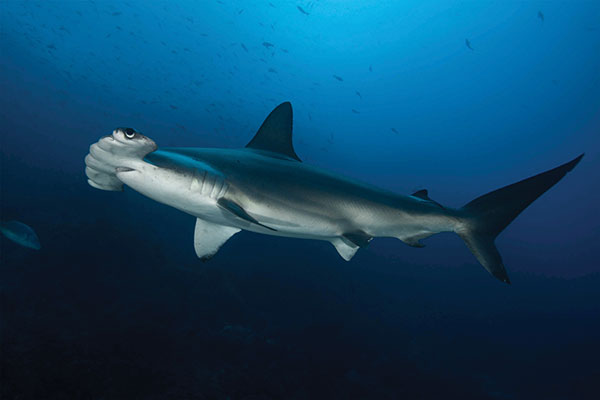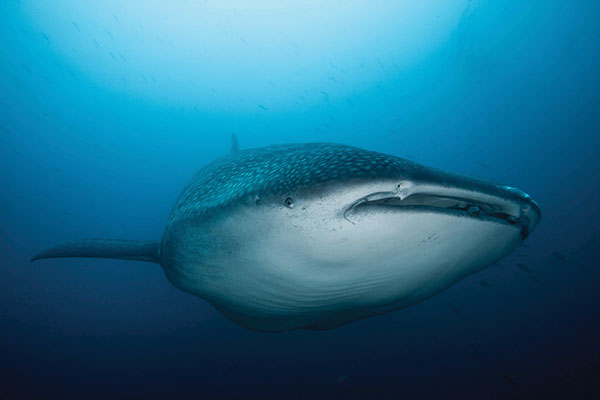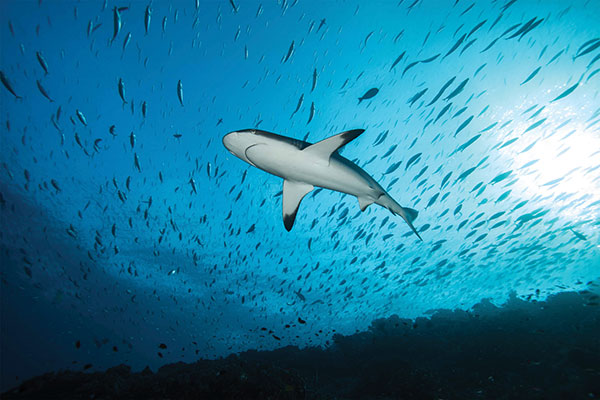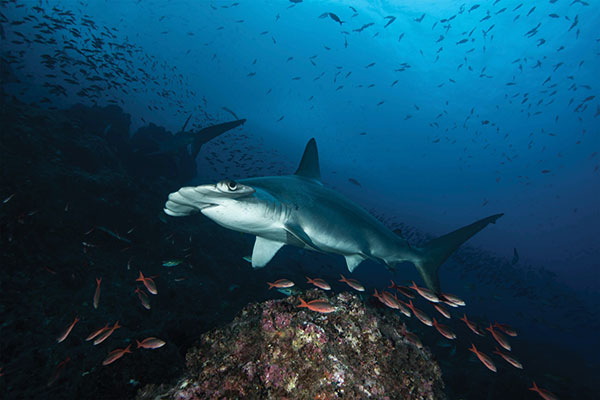Swimming With Sharks: Fascination & Conservation
Twenty-year-old Josh Friedman spends a lot of time underwater “playing” with sharks. It’s his belief that sharks are badly in need of better public relations to improve their image and active advocacy for their conservation.

All Photos © Josh Friedman
Look, for example, at any list of the “World’s Most Dangerous Animals” and you’ll find sharks—particularly the great white—in the top 10. One list places sharks fourth out of 10. Incidentally, humans are listed as sixth on that list. Every year only about 100 shark attacks are reported worldwide. Seventeen fatalities were recorded in 2011, out of 118 reported attacks. Almost all shark experts believe the danger presented by sharks is greatly exaggerated. Even filmmaker Peter Benchley, creator of the Jaws phenomenon, attempted to dispel the myth of sharks being man-eating monsters in the years before his death.
“I am not a big fan of ‘Shark Week,’” Friedman says. “Most of these programs reinforce misconceptions of sharks I try to dispel. They are portrayed as ravenous, indiscriminate predators—dangerous man-eaters. Some more informational programs that explain shark behavior have scientific merit, but that’s not what attracts most viewers. In its most popular programs, for example, Discovery Channel uses glorified footage of predatory behavior and shark ‘feeding frenzies’ to attract viewers. It is a huge hindrance to shark conservation efforts.” Friedman notes that the French film Oceans (2010) shows humans swimming comfortably with sharks.


Into The Water
Friedman, who grew up in the beach town of Santa Monica, California, became a certified open water diver at age 12. Advanced open water and rescue diver certifications followed shortly thereafter. Friedman also has his semi-closed and closed-circuit rebreather certifications. “The rebreather,” Friedman said, “is a dream come true for underwater photographers. No bubbles and longer dive times make for spectacular underwater encounters and experiences.”
He began underwater photography at age 12 with a Canon PowerShot and plastic underwater case. As his interest and skill grew, he upgraded equipment. Today his work is done with a Canon EOS 5D Mark II, primarily with a 17-40mm lens. His case is a Subal CD5MII. For lighting, he uses two Sea & Sea YS-250 strobes.
“Initially, I wasn’t extremely passionate about photography,” Friedman said. “It was more just a way to show friends what I did during diving trips since very few people my age engaged in the sport. However, as I began to share my photos, people seemed very interested to learn more about the ocean and what it was like to experience the underwater world. And, as I learned more about global threats to our marine ecosystems, I embraced photography as a tool to advocate for conservation.”


Friedman admits that, at first, he was fearful of sharks. But he was also fascinated by their physiology and history. “I have never had any close calls while diving. When I have dived with some sort of food to attract sharks, I have either been in a cage—as I was with great whites—or diving with professional safety divers experienced in diving with tiger and bull sharks. Sharks, in my experience, are always more interested in chum than the divers. Close calls usually happen when food is involved, but safety precautions are not taken. Divers can also get careless by getting too close to the food that is drawing them in.”
Friedman said that being in a cage studying great whites is one of the most awesome experiences he’s had. “Sensing the sheer power and gracefulness of the animals is truly a singular experience. Unfortunately, photography is hampered a bit; there is only a small window for photography and your mobility is restricted.
“I have never seen sharks attack cages in a frenzy. The metal cages mess with their electroreceptors so, the very few times they nudged the cage, they were likely confused. In no way were they trying to attack the cage or divers in it. My initial fear turned into awe and admiration for these magnificent creatures. As a result, shark conservation has become a very personal issue for me.”

Friedman cited the large-scale slaughter of sharks for their fins. He says he has committed himself to advocate for preservation of shark populations and to expose unsustainable and destructive methods of fishing. “Diving has provided me with close personal encounters with sharks of many species. Through these experiences, I have come to understand much about the behavior and true nature of these animals. These interactions have encouraged my advocacy for these amazing creatures, and underwater photography enables me to use my images to support their conservation,” Friedman said.

Where It’s Taken Him
His shark diving expeditions have taken him thus far to Fiji, French Polynesia, the Galapagos, Costa Rica, the Bahamas, and Mexico. Friedman is enrolled at Bowdoin College, majoring in Environmental Studies, Earth and Oceanographic Science.
He has also worked as an aquarist intern at the Santa Monica Pier Aquarium. His busy academic schedule and diving trips somewhat limit his advocacy activities, but he recently had an article published in Alert Diver magazine that was also posted by a marine conservation nonprofit organization: www.healthebay.org/blogs-news/protecting-sharks-through-photography.
“My site (http://joshfriedman photography.com) is nowherenear where I want it to be right now. I’m in the process of adding a section about shark conservation with photos, information, facts, and links to nonprofits engaged in meaningful projects to help protect sharks.” Friedman also donates 10 percent of the money he receives from sales of nature photos offered on his site to nonprofits engaged in shark conservation programs.

“The long term for me is unclear, but my dream is to pursue a career connected with marine conservation. Ultimately, photography will remain an important part of my advocacy and has evolved into my greatest passion,” he said.











































